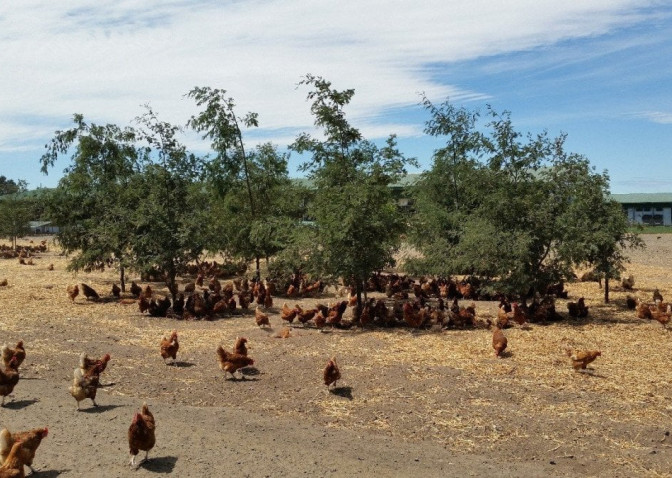
Resilient plants on the range
Plants (ground cover and trees) grown on free range layer farms provide a vital role by enriching the outdoor range and creating an attractive area for hens to go outdoors and explore. However, specific information on what to grow and how to go about sowing pastures and planting trees/shrubs is not easy to find for free range egg farmers, with material spread across many and varied sources.
Therefore, the main aim of the project was to consolidate agronomic information on the how and what to plant while also taking into consideration the main climatic zones of Australia.

Plants (ground cover and trees) grown on free range layer farms provide a vital role by enriching the outdoor range and creating an attractive area for hens to go outdoors and explore.
However, specific information on what to grow and how to go about sowing pastures and planting trees/shrubs is not easy to find for free range egg farmers, with material spread across many and varied sources.
Therefore, the main aim of the project was to consolidate agronomic information on the how and what to plant while also taking into consideration the main climatic zones of Australia.
Related organisations

The project had three components
Farm case studies
Case study farms to see what plant species and how farms establish and maintain vegetation on the range.
Guidelines
Development of a guideline package on what and how to plant a range.
Planting
The planting of perennials to enhance the outer range areas to increase utilisation by hens.
Important findings
Perennial pasture plants
Perennial pasture plants are very important, in the case study farms both perennial grasses and perennial legumes were utilized. When annual species had died off for the season, perennials provided some green ground coverage, this was most evident on those farms in the temperate (Mediterranean) zone during summer.
Even usage
It is difficult to achieve even usage by hens across the range. Hens utilize the areas closest to the shed more often. Temperature and wind strength have a big impact on the hens willingness to go further out on the range. Hens are less likely to venture to the outer range if temperatures are above 25 degrees celsius and it is windy.
Behaviour
As a result of hen ranging behaviour, botanical composition of the ground cover species will change according to the distance from the shed; with more activity and hen numbers closest to the shed and less activity and hen numbers furthest from the shed. Weed species tend to be present closest to the shed.
Climate
Drier climates and/or drought conditions limit the opportunities for free range farms to re-sow ground cover on the range and plant trees/ shrubs. However, free range farms in drier climatic zones can benefit from growing shrubs like Oldman saltbush.
Planting advice
In the case study farms, tree and shrubs played a vital role on the range providing shade, shelter and dustbathing sites. All farms were actively planting trees and shrubs with hardy local species used. Furthermore, trees needed protection around the root zone from hen activity especially ranges stocked at 10,000 hens/ha.

For more information, please go to:
-crop-850x675.png)
Looking for engagement?
Showcase your commercialisation opportunity today.
Talk to our team to discuss how growAG. can connect your innovation to industry.
Have questions? Find answers to our most frequently asked questions on research projects, commercial opportunities, organisations and more.
